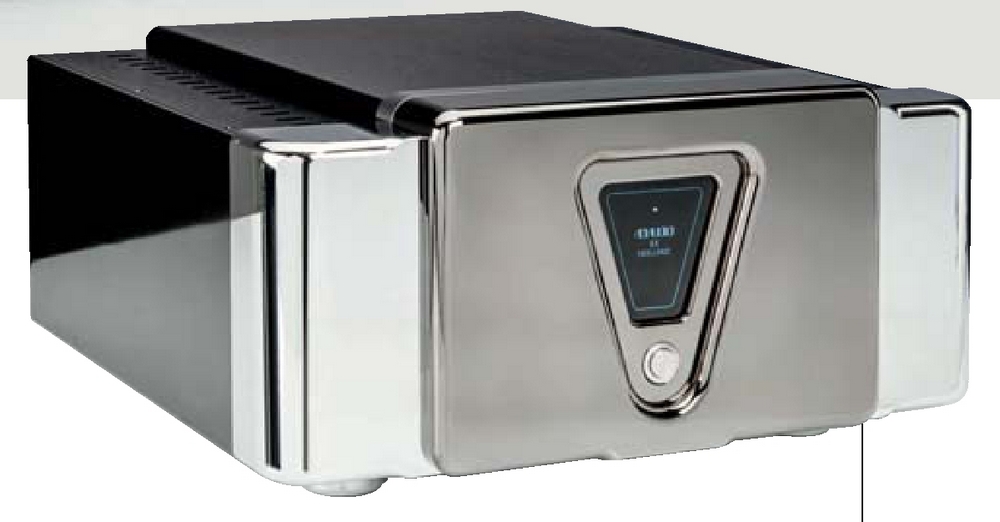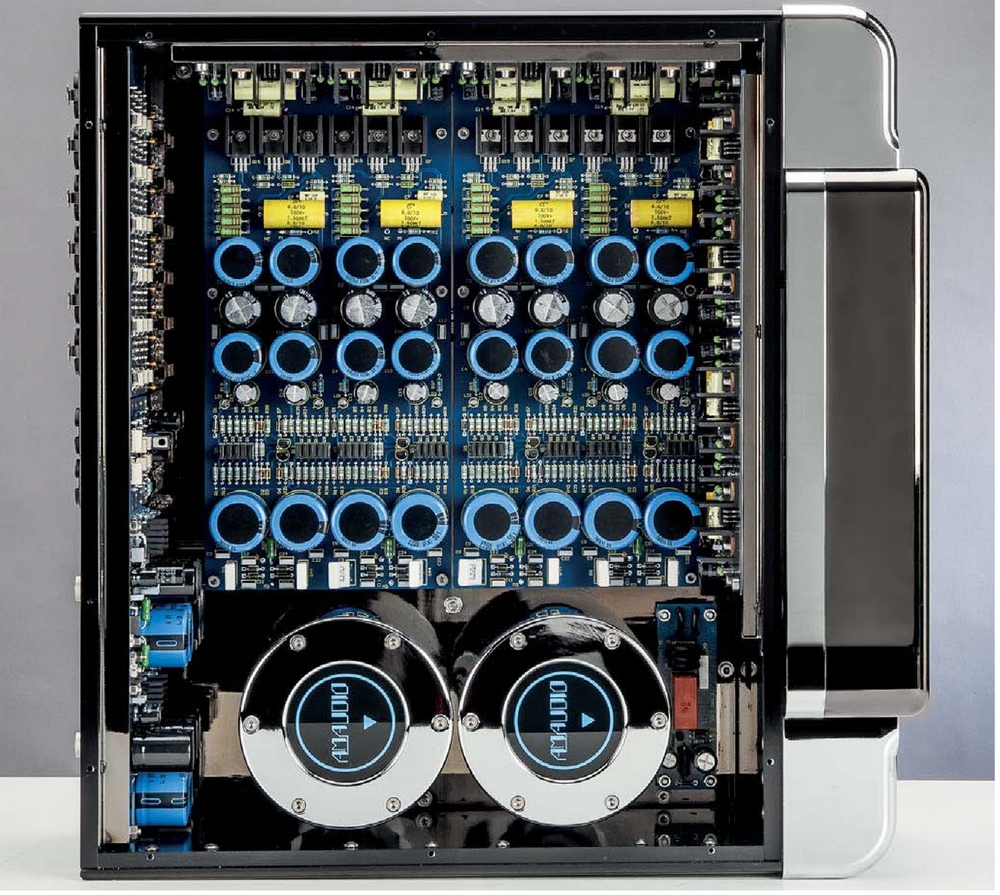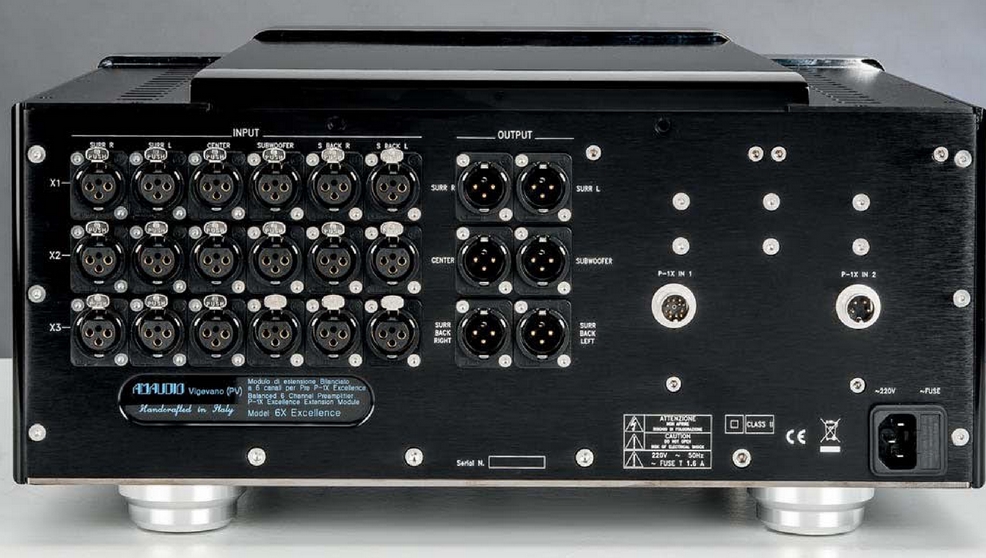PI Greco is a brand made by AM Audio.
There are 3 products in the Excellence series; P-1X, 6X and A-1000X.
P-1X:
The main frame (P-1X) is a stereo dual mono balanced pre-amplifier equipped with a blue OLED display and a 4-sections R2R-type relay-based potentiometer featuring 501 0,2 db steps ranging from -99.8 to 0 dB.
This unit can also control a second optional unit (6X), featuring 6 balanced channels with 12 R2R type potentiometers which can be adjusted using the main volume control. All this results in a HT 7.1 all-balanced system with an overall weight of “only” 45+45 kg. All the 8 channels use the same signal amplification circuit as well as the same power supply circuit pattern, though the circuits have different dimensions.
The amplification circuit consists of two stages made of 3 MOSFET active components: the first stage uses a 2SK214 MOSFET and covers the whole voltage gain required, while the second one, made with two 2SJ77 MOSFETs, features only a current gain, ensuring a very low impedance output.
The circuit features zero feedback; the first stage gain varies according to the “sound” and “drain” resistance values, resulting in a reduced local reaction, thanks to the low inherent gain typical of this kind of MOSFETs.
The P-1X power supply section is the most impressive one ever integrated into a preamplifier. Four 100 VA transformers, resin-coated in two chrome-plated aluminium containers, serve 5 different voltage rectifying and stabilizing stages. The power supply stages of the two amplification circuits rely on the filtering capacity provided by 8 Nippon Chemi-Con 82,000MF, 63V electrolytic capacitors, 8 x 8,200MF capacitors, 4 x 5,600MF capacitors and 24 x 470 MF capacitors, for an overall filtering capacity of 547,280MF. By adding to this the filtering capacity of the two external units power-supply systems, the display, the IR receiver, the low start circuit and the R2R volume control unit (amounting to about 55,000MF), a total of over 800,000MF (0.6 Farads) is reached.
The P-1X pre-amplifier allows for the connection of six balanced sources while, at the output, it features two XLR connectors for each channel. Two 6-poles sockets make it possible to supply, in dual-mono mode, two external units (phono units or modified players), powered by voltage-stabilized power-supply circuits which are connected to the dedicated secondary circuits of the power-supply transformers.
A new user interface displays both the inputs and the volume on an OLED display. The display module is manufactured using SMD components: this technology improves the stability and dramatically reduces the inherent tolerances associated to the passive components.
The power-supply system, as well as the connectors and the communication element inside the pre-amplifier, are electrically isolated from the audio pre-amplifier section, in order not to bring noise into the amplification stages. The OLED display integrates a 16-grey-level matrix, for a total of 256 x 64 4-bit weighted points; the OLED technology offers view angles close to 180°, resulting in no limits as regards the position of the equipment in respect to the user. In addition, the Densitron display offers an exceptionally good and attractive visual and aesthetic quality.
A 4-sections R2R-type relay-based potentiometer featuring 501 0,2 db steps has been specially conceived for regulating the volume. This kind of potentiometer allows volume levels absolutely identical for both the channels to be obtained, to the advantage of the sound image, while the golden contacts of the relays keep the signal quality unchanged. The only two drawbacks of this kind of potentiometer are the cost and the noise produced by the switching of relays: in this case, the careful selection of the relay and of its controlling system made it possible to reduce the noise to levels close to zero. A noteworthy feature is represented by the impressive number of cycles which these relays can support: up to 50,000,000 (fifty millions) of cycles.
The 50 mm-thick front panel features two kinds of chrome plating, that is black in the middle and bright on the lateral parts. The milling of a P-1X front panel requires about 24 hours, while the rounding of one side panel takes 6 hours. The machining process is carried out by means of a spherical milling machine, performing alternate runs at a feeding speed of 0,1 mm/run. Moreover, each machining process requires a special machine program.



























